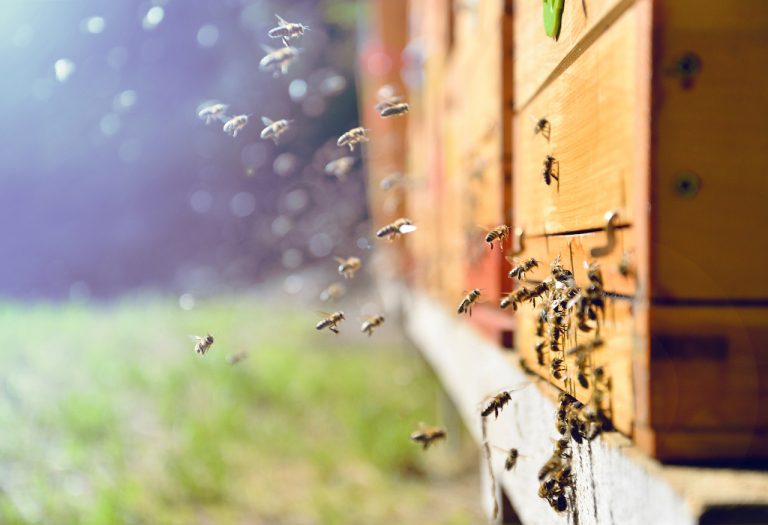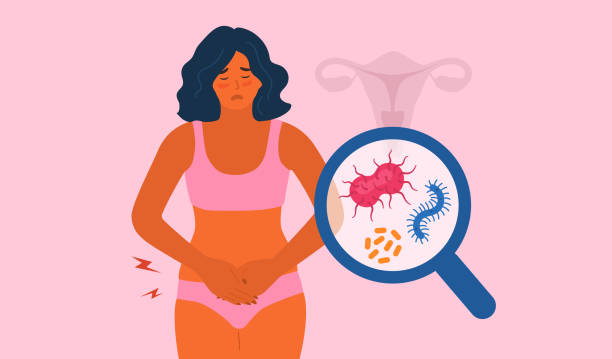Story Highlights
- Honeybee venom has been previously studied for its potential benefits in the treatment of arthritis, rheumatism, pain relief, and cancerous tumors among other conditions, but the mechanism by which it works has not been clear.
- Australian scientists have published a paper with evidence for the ability of honeybee venom to rapidly and selectively kill aggressive breast cancer cells and prevent them from reproducing, while sparing healthy cells.
- If further research supports the findings, honeybee venom—available all over the world—could open the door to affordable, accessible cancer treatments for patients in remote areas without ready access to traditional therapies.
Honeybees have long provided humans with vital pollination of fruits and vegetables as well as honey, a healthy alternative to processed sugar that also happens to have important medicinal and antibiotic uses. Now it appears that bee venom may make another contribution to human health, with a potential role to play in killing cancer cells.1
Potential Uses for Bee Venom in Human Medicine
Bee venom is recognized to have medicinal properties and has been studied for use in arthritis, rheumatism, pain relief, skin conditions and cancerous tumors.2 Bee venom immunotherapy also has been effective in reducing bee sting reactions in people who are allergic to the stings and may provide some relief against joint pain, osteoarthritis, Parkinson’s disease, fibromyalgia, nerve pain, rheumatoid arthritis and pain associated with stroke, although further study is needed to establish a benefit.3
Previously, scientists have shown that melittin, the active molecule in bee venom responsible for the pain associated with a bee sting, is toxic to many cancerous tumor cells including melanoma, lung, ovarian, and pancreatic cancers, but the mechanisms involved in its beneficial effects have not been clear.4
New Evidence of Anti-Cancer Mechanism of Venom
Researchers at the Harry Perkins Institute of Medical Research and the University of Western Australia, both in Perth, Australia, have shown that both honeybee venom (containing natural melittin) and a synthetic form of melittin alone had a powerful effect on cancer cells, killing 100 percent of cells of both triple-negative breast cancer and human epidermal growth factor receptor 2 (HER2)-enriched breast cancer—two particularly aggressive and treatment-resistant types of breast cancer. Critically, the treatments had only “negligible effects on normal cells.”5 The same study showed that bumblebee venom, which does not contain melittin, did not have the same potent effect.6
The researchers used venom from 312 honeybees and bumblebees collected across Perth, Western Australia, Ireland and England to compare the effects of venom or melittin in all subtypes of breast cancer as well as on normal cells.7 According to lead investigator Dr. Ciara Duffy, “We found both honeybee venom and melittin significantly, selectively and rapidly reduced the viability of triple-negative breast cancer and HER2-enriched breast cancer cells. The venom was extremely potent… We found that melittin can completely destroy cancer cell membranes within 60 minutes.”8 They also found that another concentration of honeybee venom killed 100 per cent of cancer cells without affecting healthy cells.
The researchers were able to demonstrate that the melittin works in two ways: Within an hour of administration, it effectively punches holes in the cell membrane, killing the cell. In addition however, within 20 minutes of administration, it rapidly disrupts the cancer signaling pathways, shutting down the chemical messages needed for cancer cell growth and reproduction.9
According to Dr. Duffy, “We looked at how honeybee venom and melittin affect the cancer signaling pathways, the chemical messages that are fundamental for cancer cell growth and reproduction, and we found that very quickly these signaling pathways were shut down.”10
Laboratory Results Show Combination Therapy Is Particularly Effective
In combination with existing chemotherapies, the honeybee venom was extremely effective in treating cancer in mice. Although more research is needed before similar treatments could be used in human patients, this study holds promise for the potential treatment of common and invasive cancers using naturally derived medicines.
Further research also is needed to determine whether different types of bees generate venom with different anticancer activities. The authors speculated honeybee venom may also be active in other types of tumors associated with overexpression of epidermal growth factor receptor (EGFR), which may include lung, glioblastoma, and colorectal cancers11 as well as tumors that overexpress HER2, such as some gastric, ovarian, endometrial, bladder, lung, colon and head and neck cancers.12
A Potentially Global Benefit
The researchers noted that honeybee venom is available globally and, if preliminary results are confirmed, may offer cost-effective and accessible treatment options for under-served populations in remote areas of the world. They concluded that their results “could be leveraged to aid the development of new therapeutic modalities for many cancer types associated with frequent drug resistance and poor prognosis.”13
References:
1 Duffy C, et al. Honeybee Venom And Melittin Suppress Growth Factor Receptor Activation In HER2-Enriched And Triple-Negative Breast Cancer. npj Precision Oncology Sept. 1, 2020.
2 Son DJ, et al. Therapeutic Application Of Anti-Arthritis, Pain-Releasing, And Anti-Cancer Effects Of Bee Venom And Its Constituent Compounds. Pharmacology and Therapeutics August 2007.
3 Bee Venom. WebMD 2020.
4 Kingsland J. Honeybee Venom Kills Aggressive Breast Cancer Cells. Medical News Today Sept. 7, 2020.
5 Ibid.
6 See Footnote 1.
7 DeMuth Sullivan K. Honeybee Venom Destroys Triple-Negative Breast Cancer Cells. Labroots Sept. 1, 2020.
8 Ibid.
9 Ibid.
10 See Footnote 4.
11 Sigismund S, et al. Emerging Functions Of The EGFR In Cancer. Molecular Oncology January 2018.
12 Iqbal N, Iqbal N. Human Epidermal Growth Factor Receptor 2 (HER 2) in Cancers: Overexpression and Therapeutic Implications. Molecular Biology International September 2014.
13 See Footnote 1.













4 Responses
Yet one more threat to honeybees. Now they’ll harvest them for venom. Too bad that they’ll die. How many crops are already endangered from lack of pollination? Has anyone asked how this therapy will affect our food crops.
would love to know how the bee venom is introduced? oral, drip, needle, or salve? wouldn’t it be great if we could just apply it topically?
There is a fair amount of evidence and anecdotal lore that long-time bee-keepers rarely get cancer although they are unhealthy in all the other ways typical of their own demographic. We not only get stung a lot but we also breath the air of a hive continually and it all smells of venom. The bees produce it continually and it drips or evaporates off them and is an intoxicatingly musky honey-like odor which I enjoy. There is a therapy being used that involves making a bed inside a protected chamber associated with several hives such that screening protects you, but the air wafting from hives is concentrated around you and it feels very benevolent — though I don’t really have any real health issues that would prove much. I do use propolis regularly ion minor cuts and infections and it does seem to get rid of warts etc. The stings give me immediate relief from bursitis or inflamed tendons and joints with overuse – that sort of thing. We do seem to have co-eoilved with honeybees over the long-term and are mutually dependent in that evolving commensal relationship.
Bees have short life-spans and are overproduced by hives if the environment is healthy. I am guessing that harvesting honey could be done without killing bees, much as it is done with snake venom, but either way, the real danger to honeybees is not so much our taking products from them in sustainable ways and killing some in the process, but in those with no interest in bees continually poisoning them and destroying their habitat and forage base and of course over-reproducing themselves until all of the earth slowly becomes subsumed in the production of human food and taken from the needs of all other biota.
Ladislav Hanka
Yeah, it may cure cancer, but that shit hurts like a MF!!